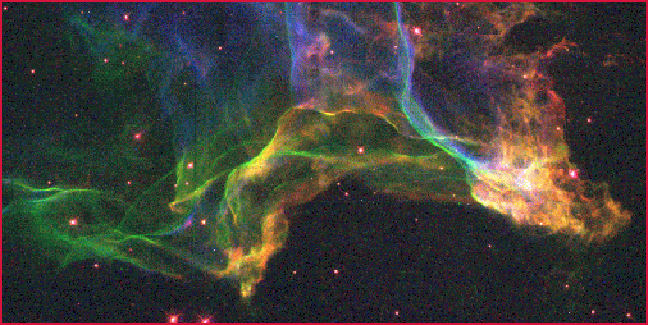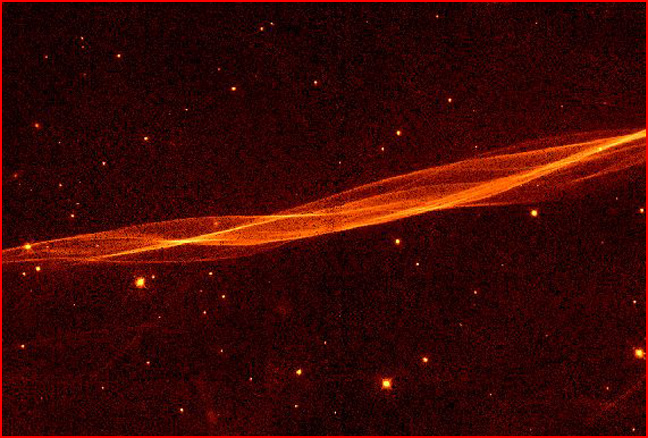|
|
||
 Credit: NASA/, HST, WFPC2, Jeff Hester  Credit: William P. Blair and Ravi Sankrit (Johns Hopkins University), NASA |
||
|
pic of the day Links:
Society for
|
Jul 30, 2004 Aurora-like curtains and filaments of the Cygnus Loop, the aftermath of a supernova, suggest an electric event, perhaps the explosion of a plasma “double layer” in a galactic circuit. The Cygnus Loop is thought to be a middle-aged remnant of a nearby supernova, the collapse of a star whose nuclear fuel has been used up. From a plasma cosmology point of view, a supernova has nothing to do with the hypothetical nuclear engine. It is an electric event, perhaps the explosion of a double layer in a galactic circuit. The aurora-like curtains and filaments seen here have more in common with electric currents in plasma than with mechanical models based on acoustic shocks. A Birkeland current can separate elements because the atoms of each element ionize at an energy level unique to that particular element. The strength of the currents vary where they twist and compress along their length. The result is concentrations of different elements in regions where the ionization potential matches the strength of the Birkeland current. The top photo illustrates this principle. It is color-coded to show regions of the nebula where different elements predominate. Blue is ionized oxygen, red is ionized sulfur and green is ionized hydrogen. The bottom photo illustrates the intricacy of the twisted Birkeland currents. Other characteristics of the Cygnus Loop that support an Electric Universe interpretation include polarization of light, compression by magnetic fields, acceleration of relativistic electrons, and x-ray hotspots. The cellular structure that confines and transmits electric currents in space is are not directly detectable from a distance. But we've seen them in action on Earth and in near-space. Here we observe many of the same behaviors. Do we dare assume that our own solar system is the only place in the universe where electric currents play an active role? No--it's much safer to assume that interstellar space beyond our solar system plays by the same rules we observe here. And those rules are electrical |
|
|
Copyright 2004: thunderbolts.info |
||
